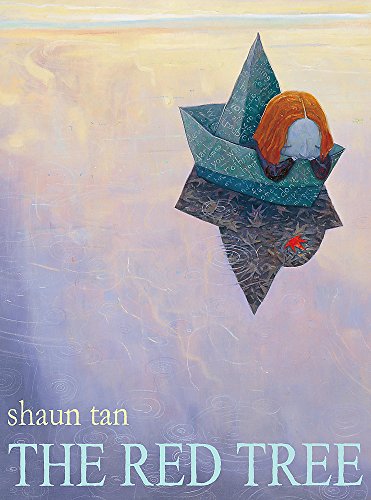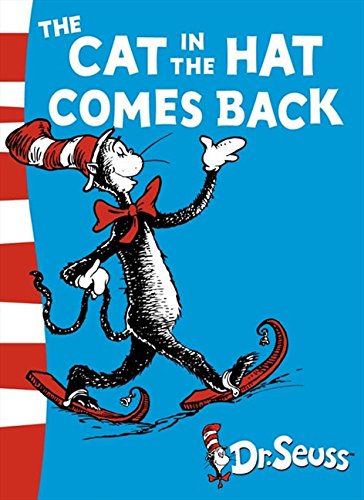First a disclaimer: Some of the books I list in these posts about Ruby’s books are obviously completely age-inappropriate. Those books don’t necessarily get read to her, at least not more than once, but I include them because I’ve encountered them in Ruby’s context and they are splendid in their own right, or for some other reason. A case in point is today’s first book.
Shaun Tan, The Red Tree (Lothian Books 2000)
A stunningly beautiful, surreal picture book that’s not for pre-schoolers, probably not for anyone younger than about 15, and definitely not for 15-month-olds. It begins with dead leaves floating in a grey environment and continues with an extraordinary evocation of depression, loneliness and an overwhelming sense of meaninglessness – all with glorious (if that’s the word) full-page images evoking that mood. The red tree of the title doesn’t turn up until the final spread, but when it does, it’s a brilliant game-changer. Shaun Tan is a genius, and I’m glad he and his books have cheered up since 2000.
Lucy Cousins, Maisy’s Traffic Jam (Walker Books 2007)
Maisie the Mouse came into being when my sons were already teenagers. I was vaguely aware of her as a phenomenon, having seen people in giant Maisie suits at children’s book fairs in the 90s, but this is my first actual Maisie book – one of more than 27 million in print according to Lucy Cousins’s Wikipedia page, Wikipedia doesn’t list it in her bibliography. It’s a concertina book, which we picked up in a street library, and unfolded in Ruby’s local park, to the delight of a random passing two year old – and Ruby. Lots of flaps to lift, and who doesn’t love a metre-long fold-out?
Rod Campbell, Oh Dear! (1983)
A classic lift-the-flap book. Only one of its flaps has been torn out so far. but that’s more a sign of Ruby’s restraint than of any quality of the book. The little boy has to find eggs, and goes through a gamut of farm animals until he remembers, and goes to the chicken coop where, splendidly, after the chook has been revealed, there further flap must be lifted to find two eggs.
Doctor Seuss, The Cat in the Hat Comes Back (1957)
I guess everyone knows that Dr Seuss (Theodore Seuss Geisel to his friends) invented the Cat in the Hat in response to a challenge to create an illustrated text that would help children learn to read. Serious literacy aid or not, the character has been pretty popular in our family, including when read to someone with advanced dementia. The Cat in the Hat Comes Back doesn’t have quite the level of terror and insouciance about breaking rules that the original has, but it’ll do. The original hasn’t turned up at Ruby’s place yet.
Sally Morgan and Kathy Arbon, Can You Dance? (Pan Macmillan Australia 2018)
A board book produced by the Indigenous Literacy Fund, its reason for being is even more worthy than The Cat in the Hat‘s, but it wears its worthiness even more lightly. The reader is asked if they can dance in imitation of a series of native Australian animals. While a lap read is quite pleasant, the book cries out to be read to a group of small people who can flap their wings like the angry magpie, stamp their feet like the wombat and so on, until the last page is pretty much a wild rumpus.
Can You Dance? is the tenth book I’ve read for the 2019 Australian Women Writers Challenge.







